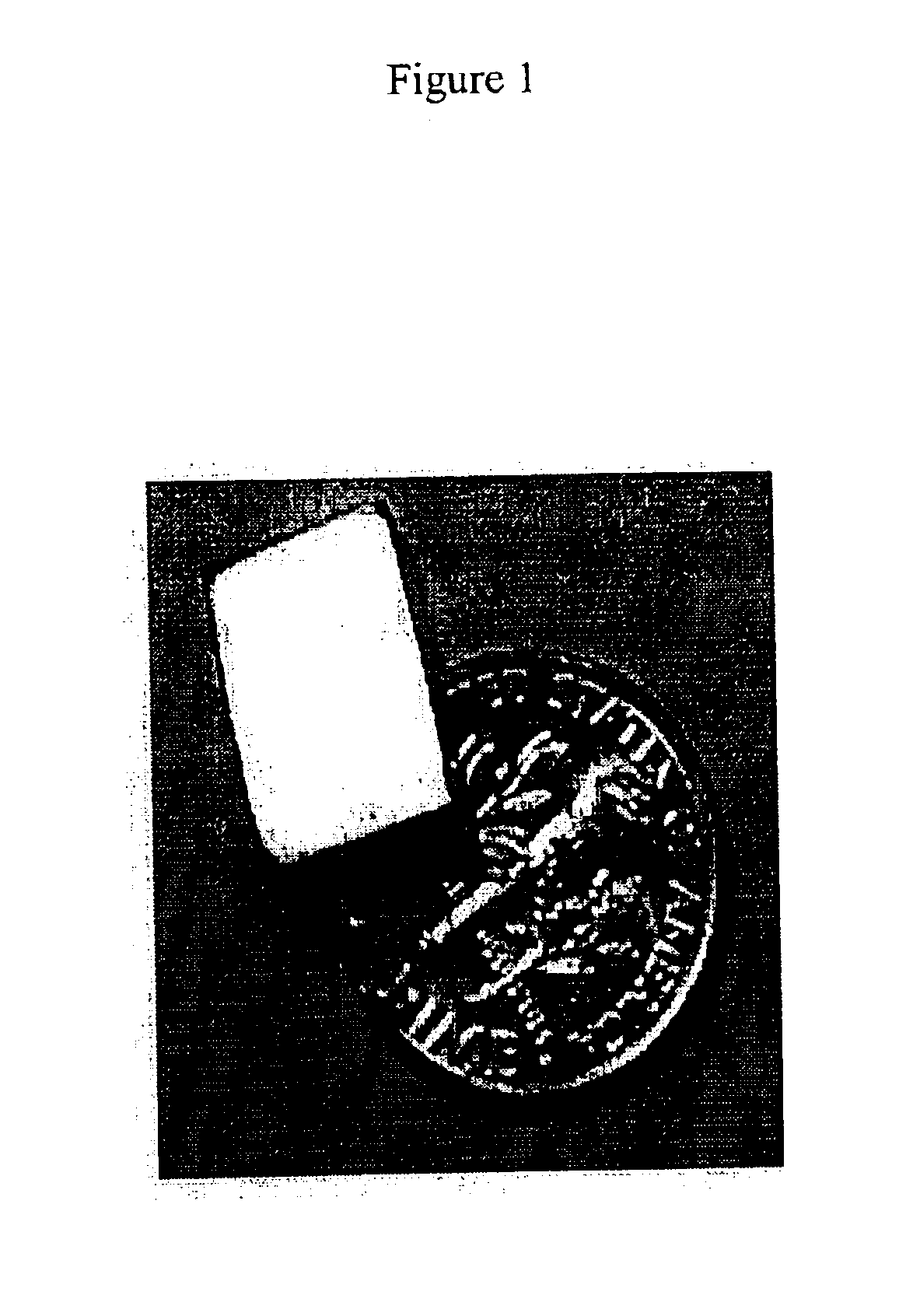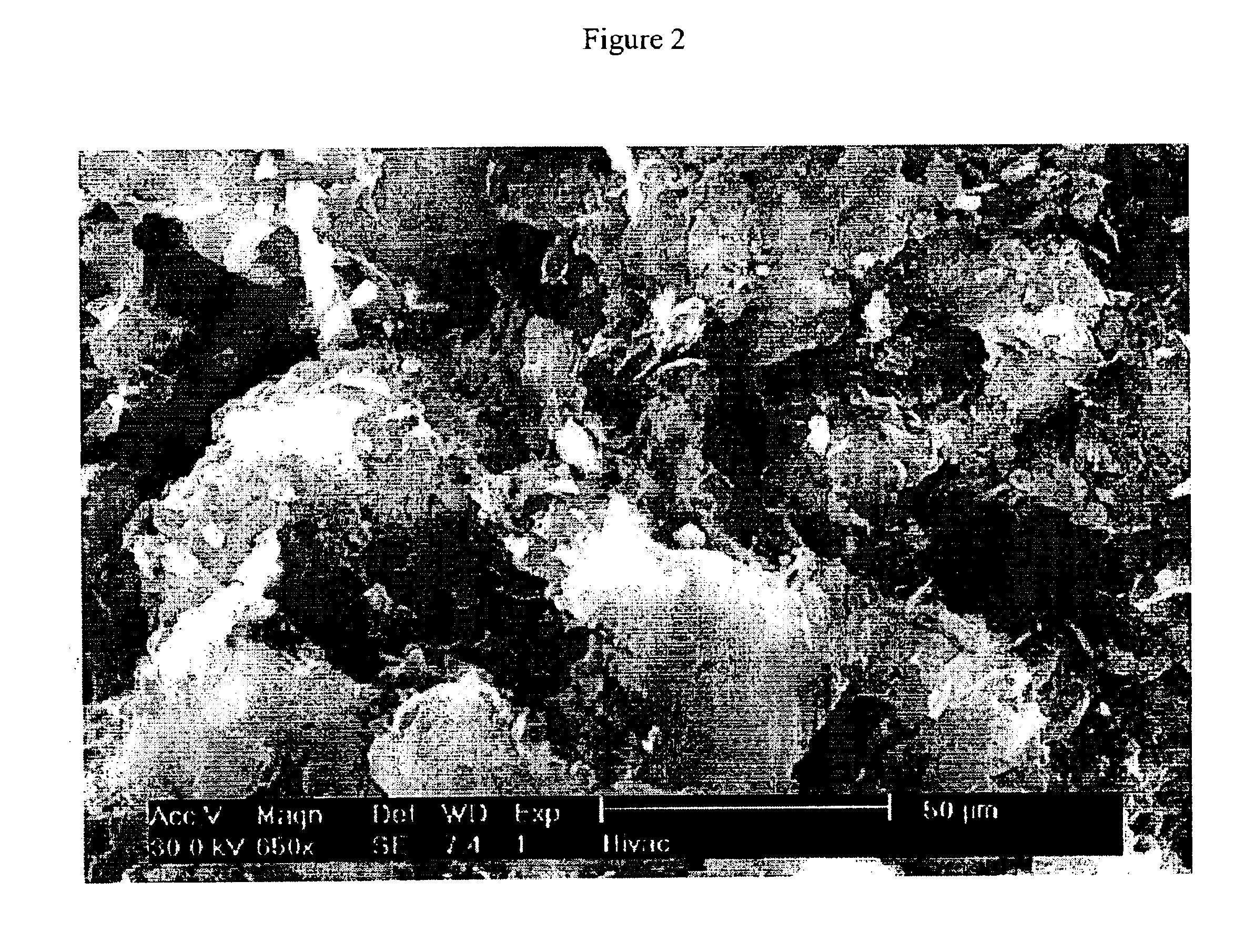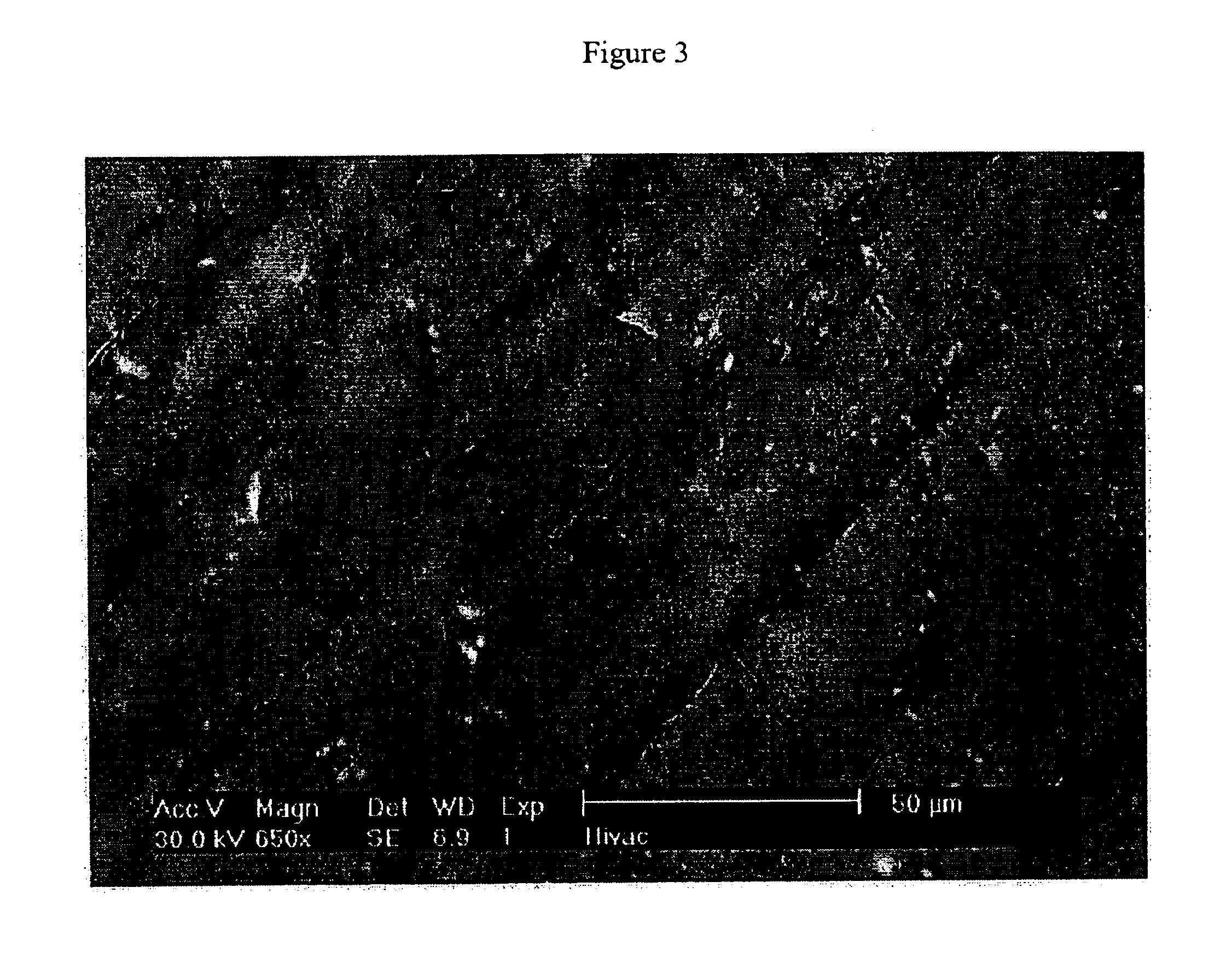Entangled single-wall carbon nanotube solid material and methods for making same
a carbon nanotube and solid material technology, applied in the field can solve the problems of limited macroscopically possible forms of single-wall carbon nanotubes
- Summary
- Abstract
- Description
- Claims
- Application Information
AI Technical Summary
Benefits of technology
Problems solved by technology
Method used
Image
Examples
example 1
[0049]This example demonstrates a method to prepare a solid SWNT block or buckyrock. 35 grams of raw HIPCO® single-wall carbon nanotubes (HIPCO is a registered trademark of Carbon Nanotechnologies, Inc., Houston, Tex.) were purified to remove amorphous carbon and metallic catalyst residues. The nanotubes were placed in a 4-liter glass beaker. To remove amorphous carbon, the nanotubes were heated at 250° C. for 15 hours in air saturated with water vapor. After the heating, the metallic iron-containing catalyst residues were removed with concentrated hydrochloric acid. One liter of concentrated hydrochloric acid was added to the nanotubes in the beaker and stirred overnight (about 15 hours) at room temperature. The resulting mixture was a SWNT-acid slurry.
[0050]To remove most of the acid from the SWNT-acid slurry, the slurry was filtered using a large (8-inch diameter, 2.5-inch deep) porcelain Büchner funnel under atmospheric pressure.
[0051]While still in the funnel, the residual acid...
example 2
[0054]This example demonstrates the morphology of as-produced and polished SWNT buckyrock solid surfaces using scanning electron microscopy (SEM). FIG. 2 shows a SEM at 650× magnification of a piece of as-produced buckyrock. Surface porosity is highly apparent in as-produced buckyrock. FIG. 3 shows a SEM at 650× magnification, of a piece of buckyrock that has been coarsely polished with emery paper. The block appears densely packed and uniform. The parallel lines in FIG. 3 are small gouges from the large grit emery paper. At 25,000× magnification, as shown in FIG. 4, the surface of the as-produced SWNT buckyrock block the surface appears as a densely-packed, entangled network of SWNT ropes.
[0055]The SWNT buckyrock block was polished on a side with a fine-grain emery paper. As shown in FIG. 5, at 50,000× magnification, the polished surface of the SWNT block shows a high degree of smoothness. SWNT ropes at one edge appear highly entangled.
example 3
[0056]This example demonstrates selected physical properties of SWNT buckyrock material.
[0057]The mechanical impact resistance of SWNT buckyrock block material was tested by hitting the SWNT buckyrock block prepared in Example 1 with a hammer. The block could not be broken with the hammer using considerable force.
[0058]To demonstrate toughness, attempts were made to cut the buckyrock with a sharp knife edge. The buckyrock gave extreme resistance to the back and forth movement of the blade and left only a minor indentation.
[0059]Microindentation hardness measurements were done using the Vickers test (ASTM Standard E 384). Although the buckyrock material is very solid, rigid, and generally inflexible, indention marks were observed with a 5 g weight. No quantification of hardness could be assessed because the measurement was not in the range of the test. Buckyrock looks more like a block of stiff material than a flexible material like rubber. However, for purposes of this test, the mic...
PUM
| Property | Measurement | Unit |
|---|---|---|
| Length | aaaaa | aaaaa |
| Mechanical strength | aaaaa | aaaaa |
| Structure | aaaaa | aaaaa |
Abstract
Description
Claims
Application Information
 Login to View More
Login to View More - R&D
- Intellectual Property
- Life Sciences
- Materials
- Tech Scout
- Unparalleled Data Quality
- Higher Quality Content
- 60% Fewer Hallucinations
Browse by: Latest US Patents, China's latest patents, Technical Efficacy Thesaurus, Application Domain, Technology Topic, Popular Technical Reports.
© 2025 PatSnap. All rights reserved.Legal|Privacy policy|Modern Slavery Act Transparency Statement|Sitemap|About US| Contact US: help@patsnap.com



